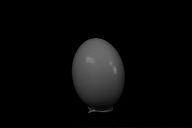Lighting Patterns

Back Lighting
AV Mode
Shutter 1/5
Aperture F/ 5.6
ISO 800

Soft Lighting
AV Mode
Shutter 2.5
Aperture F/ 5.6
ISO 200

Hard Lighting
AV Mode
Shutter 1/30
Aperture F/ 8
ISO 800

Top Lighting

Side Lighting
AV Mode
Shutter 1/15
Aperture F/ 4.5
ISO 800

Front Lighting
AV Mode
Shutter 1/8
Aperture F/ 4.5
ISO 800
AV Mode
Shutter 0.3
Aperture F/ 5.6
ISO 400

Loop
Camera mode: M
Shutter 1/125
Aperture F.11
ISO 100

Rembrandt
Camera mode: M
Shutter 1/125
Aperture F.11
ISO 100

Rim
Camera mode: M
Shutter 1/125
Aperture F.11
ISO 100

Butterfly

Split
Camera mode: M
Shutter 1/125
Aperture F.11
ISO 100
Camera mode: M
Shutter 1/125
Aperture F.11
ISO 100
1.What are your overall strengths of your project? My overall strengths for this project is being capable to do it by myself, even if they turned out worse compared to others. It's essentially an ego boost I very much needed.
2. What improvements could be made? Improvements that could be made are as follows: Better lighting, cooperating skills, more creative poses.
3. What did you learn about lighting patterns? I learned that lighting patterns can affect how the photo looks and effecting the skin. It can also make a portrait look more feminine or masculine.
4. How did photographing an egg prepare you for photographing a classmate? Photographing an egg prepared me by giving me an example of how lighting should be placed.
5. In what ways, were the two labs similar and what ways did the experiences differ? They were similar because of photographing something with lighting, however certain lighting can not be done with an egg.
6.Why is lighting important for a photographer to understand? It is important for a photographer to understand lighting because it is used to convey information and emotion.
7. How will you incorporate lighting in your photography in the future? I will incorporate lighting in my photography in the future by using it to convey an emotion, feeling, or information.
I DID THIS PROJECT BY MYSELF BECAUSE IM STUBBORN LIKE THAT
